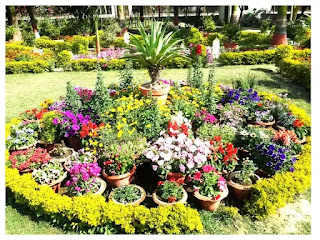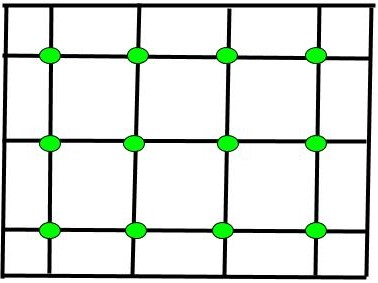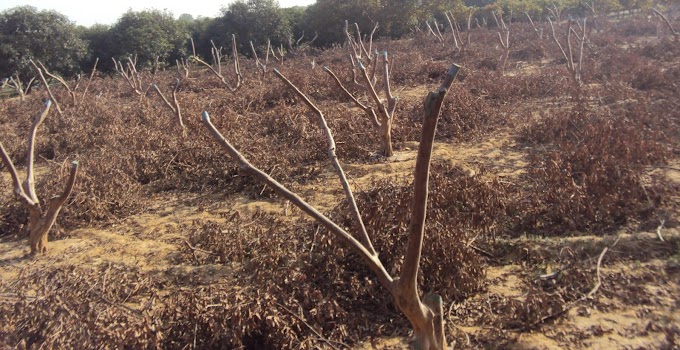D(caps)iversity in living things exists in nature and subtle differences are present even in clones. The orderly grouping of plants based on their resemblance is called classification. Like other individuals, grouping and naming of plants started in the primitive era based on their different uses in different cultures of the world. The horticultural plants can be classified into different groups as under:
Table of Content(toc)
Natural classification
The natural classification is based on the uses of the plants. Subsequently the name of the same plants varies in the different cultures of the world according to their uses. The natural classification is not based on scientific principles; therefore, it is neither universally applicable nor acceptable.
Scientific system of classification
The modern system of classification of living organisms was proposed by R.H. Whittakar in 1969 in which all living organisms have been classified into five kingdoms viz. Monera (all prokaryotes), Protista (unicellular eukaryotes), Plantae ( multicellular and chlorophyllous eukaryotes), Fungi (multicellular and non-chlorophyllous eukaryotes) and Animalia ( multicellular and ingestive eukaryotes). The kingdom Plantae to which horticultural plants belong further classified into two subkingdoms- Phanerogamae (flowering and seed bearing plants) and Cryptogamae (non-flowering and non-seed bearing plants). A horticultural plant can be classified from kingdom to variety based on resemblance of characteristics. For example mango can be classified as under:
Kingdom - Plantae
Subkingdom - Phanerogamae (flowering and seed bearing)
Division - Spermatophyta (distinct stem, root and leaves)
Subdivision - Angiosperms (true flower, seeds enclosed within fruits)
Class - Dicotyledones
Order - Sapindales
Family - Anacardiaceae
Genus - Mangifera
Species - indica
Variety - Amrapali
This system of classification is based on scientific principles and universally adopted and applicable. Pyrame de Candole first introduced the term taxonomy which deals with classification and naming of plants on scientific principles whereas Carolus Linnaeus introduced a binomial nomenclature system in which a given plant’s name consists of two parts. The first part represents the genus and second species plant belonging, for example the scientific name of mango is Mangifera indica , the Mangifera being the genus and indica denoting the species. Genus (genera-plural) is the subordinate unit of the family.
Classification based on life cycle
The plants are classified into three classes based on the period required for completing their life cycle. These classes are as follows:
Annuals
The plants completing their life cycle in one growing season or in one year are called annuals. For example: zinnia, marigold and phlox. Annuals are further classified as follows:
Rainy season annuals
The annuals which are sown in May and June and flower during the rainy season are called rainy season annuals. For example: Mary gold, Aster, Salvia and Zinnia.
Winter season annuals
These annuals are cultivated to bloom in winter season. The seeds of winter season annuals are sown in September and October. For example: Phlox and Antirrhinum.
Summer season annuals
These annuals are sown in January and February and they bloom or express their beauty during the summer season. For example: Sunflower and Zinnia.
Biennials
The plants that require two growing seasons or two years to complete their life cycle are called biennials. For example: Sugar beet, onion and cabbage. Normally biennials complete vegetative growth in the first growing season followed by flowering and death in the second growing season.
Perennials
The plants that grow year after year once planted are called perennials. For example: Rose, Tuberose and Chrysanthemum.
Monocarps
The Monocarps are those plants which grow and remain in vegetative phase for many years and flower only once in lifetime thereafter they die. The new plants arise from the roots only after the death of the monocarps. For example: Agave spp.
Classification based on leaves shedding
Some plants shed few leaves while others shed all leaves once in a year. The plants are grouped into two following groups on the basis of its leaves shedding behavior:
Evergreen plants
Evergreen plants are those plants which maintain green leaves through the year and shed few senescence leaves. For example: Citrus, Mango, Jackfruit, Papaya, Coconut and Banana.
Deciduous plants
Deciduous plants are those plants which shed all leaves once in a year. The shedding of leaves may take place either in the dry or cold season. For example: Ber and Aonla shed their leaves in the dry season and Phalsa, Apple, Pear and Peach in the cold season.
Classification based on climatic requirements
A plant species can not grow flowers and fruit at all places because of climatic changes from place to place. The climate, particularly temperature, is the most important factor affecting the growth and productivity of horticultural plants. Based on their climatic requirements the horticultural crops are classified into three classes:
Temperate crops
Temperate horticultural crops flourish well in temperate regions of the world. These plants can withstand the cold and need a chilling temperature. They go under rest or dormancy and shed their leaves during winter for examples: Apple, Pear, Walnut, Almond, Cherry, Strawberry, Plums and Peaches.
Tropical crops
These plants need warm and humid climates with very mild winters. The plants can not withstand cold and can get frost injury if exposed to low temperature for example: Pineapple, Banana, Papaya, Coconut, Cocoa, Guava, Sapota and Mangosteen.
Subtropical crops
These plants require warm and humid climates and can tolerate low temperatures during mild winter for example: Mango, Litchi, Citrus, Grape, Pomegranate, Avocado and Loquat.
Classification based on season
Horticultural crops can also be classified into three classes on the basis of the season in which they grow best:
Kharif crops
These horticultural crops are sown with onset of monsoon in June –July and become ready to harvest in the rainy season for example: Bhindi, Chili, Snakeguard, Pumpkin and Sponge gourd.
Rabi crops
The rabi crops are sown with onset of winter in October–November for example: Potato, Cabbage, Cauliflower, Tomato, Radish, Carrot and Pea.
Zaid crops
These crops are sown in February-March for example: Brinjal, Bitter gourd, Watermelon, Muskmelon and Pumpkin.
Classification based on kinds of stem
Herbs
The plants with soft and non-woody stems are classified as herbs. The herbs that live year after year are called herbaceous perennials whereas herbaceous annuals complete their life cycle within one growing season. The examples of herbs are: annual bedding plants, vegetables, Aster, Gerbera, Balsam, Phlox and Zinnia.
Shrubs
The shrubs are perennial plants having many woody branches arising from the base of the plants at ground level. The shrubs are usually smaller than trees and have no main trunk. The shrubs are grown for aesthetic purposes in ornamental horticulture. For examples: Karonda (Carissa carandas L.) Phalse (Grewia subinaequalis D.C.), Citrus limonia var. variegate, Jasmines, Duranta plumieri, Crotons, Acalyphas, Jatropha pandurifolia, J. rosea, Hibiscus and Bougainvillea.
Tree
The plants have a main trunk with woody branches arising from the upper part of the trunk are called trees for example: Mango, Aonla, Gulmohar, Jamun etc.
Classification based on growth forms of the stem
Erect
The plants able to grow upright at 900 angle to the ground level without artificial support are classified under erect. Examples: trees
Decumbent
The plants extremely inclined with the tips raised for example: peanut
Creeper
The plants grow horizontally and crawl on the ground with adventitious roots are called creeper. The adventitious roots arise from the nodes of the stem called stolon. Example: Strawberry.
Climbers
The climbers are plants which possess special structures to climb over a support. These special structures may be look-like thorns (Bougainvillea), tendrils (Bignonia), rootlets (Ficus repens). Other examples are: Pea, Sweet Potato, money plants and Cucurbits.
Classification based on uses
Edible plants
If the plants or their parts are eaten they are called edible plants. The edible plants are further classified into:
Fruits
The fruit is botanically mature ovary. The fruits are those plants of which fruits or its closely related structures (e.g. thalamus in pome) are edible for example: Mango, Banana, Ber , Grapes and Apple.
Vegetables
The herbaceous plants of which some parts are eaten either cooked or raw with the meal are termed as vegetables for examples: tomato, brinjal, peas, carrot, spinach and cauliflower.
Spices
The plants or its product which are used as food adjuncts to add flavor and aroma are called spices whereas spices which are used as food adjuncts to add taste only are called condiments. Examples: Turmeric, Ginger, Black Pepper, Fenugreek, Fennel, Cumin and Coriander.
Ornamental plants
The plants cultivated for beautification or aesthetic values are called ornamental plants. The ornamental plants may be flowering or non-flowering. Example: Rose, Gulmohar, Zinnia, Duranta, Begonia, crotons and Acalyphas.
Medicinal and aromatic plants
The plants that have medicinal and aromatic properties are classified under medicinal and aromatic plants for example: Jasmine, Safed Musli, tulsi, Kalmegh and Mentha.
Other classification
Tree fruit
The fruits born on trees are called tree fruits for example: Mango, Apple, Pear and Aonla.
Small fruits
The fruits born on herbs, bushes and shrubs are termed as small fruits. The examples are Karonda, Phalsa, Raspberry, Cranberry and Strawberry.
Nuts
The fruits covered with a hard shell separable from the firm inner kernel are called nuts or nut fruits. Examples: Cashew nut, Walnut, Pecan nut, Chestnut and Hazelnut.
Classification of Vegetables(link)









